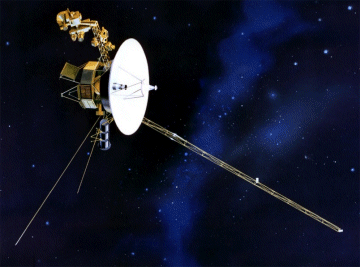| Author: | |
| Website: | |
| Page title: | |
| URL: | |
| Published: | |
| Last revised: | |
| Accessed: |
In telecommunications, the detection and correction of errors is important for maintaining data integrity on "noisy" communication channels. Error detection is the ability to detect the presence of errors introduced to a stream of data by interference or faults in the transmission system between a transmitter and a receiver. Error correction is the ability to restore data in which errors have been found to its original state. If an error is found using an error detection code, the receiver can respond either by explicitly requesting retransmission of the data from the transmitter, or by not sending an acknowledgement for the corrupted data, in which case the transmitter will assume that the data has either not been received or has been rejected by the receiver, and will re-transmit the data. Error correction codes are used by the receiver, acting alone, both to detect the presence of an error in the received data and to re-construct the data in its original form using the error correction encoding. Error correction necessarily involves the transmission of a significant amount of additional (redundant) data. The overhead involved is usually far greater than that required for error-detection schemes, and for this reason error correction is generally only used for applications where re-transmission of the data is not practical. In some schemes, a compromise (hybrid) solution is used in which minor errors are corrected using error correction codes, while major errors result in a request for retransmission.

Signals from Voyager 1 now take more than fourteen hours to reach Earth
An error-detecting code (or backward error correction) involves the addition of sufficient redundant data to the information being sent to enable the receiver to detect errors and request the receiver to retransmit the data. This approach is known as an automatic repeat request (ARQ) strategy. A number of commonly used error detection schemes exist, which vary considerably in their complexity. The amount of additional information sent is usually the same for a given amount of data, and the error detection information will have a relationship to the data that is determined by the application of an algorithm of some kind to the data itself. The receiver applies the same algorithm to the data it receives to obtain its own version of the error correction code, and then compares that version with the error correction code it has received. If the two codes match, the receiver can be reasonably sure that the data is correct. If not, it will assume that an error has occurred and respond in the appropriate manner (i.e. request retransmission, either explicitly or by not sending an acknowledgement). The common types of error detection scheme are listed below, together with a brief description.
An error-correcting code (ECC) or forward error correction (FEC) code involves the addition of sufficient redundant data to the information being sent to enable the receiver to both detect and correct errors, without needing to request the receiver to retransmit the data. The advantage of this approach is that a return path is not required. This would be a critical requirement for applications such as communication with deep space probes, for example, where the delay between sending a message and receiving a reply could be considerable (Voyager 1, launched in 1977, is now more than ten billion miles from earth, and signals received by NASA arrive over fourteen hours affter they have been transmitted). The disadvantage is that, in order to ensure the required degree of data integrity, a large amount of redundant data will have to be transmitted with each message, significantly increasing the bandwidth required. Shannon's theorem defines the code rate as the total number of bits divided by the number of bits of actual data, and the coding gain as the difference in signal-to-noise ratio (SNR) between encoded and un-encoded data that would be necessary for them both to exhibit the same bit error rate (BER). The effectiveness of the encoding scheme is measured in terms of both its code rate and its coding gain. The theorem essentially sets an upper limit on the error correction rate that can be achieved with a given level of data redundancy, and for a given minimum signal-to-noise ratio.
Error-correction codes can be divided into block codes and convolutional codes. Block codes work on blocks of data of a fixed-size (e.g. packets). Convolutional codes work for bit streams of arbitrary length. They tend to be more complex and more difficult to implement than block codes, and involve considerably more overhead per unit data. Block codes are calculated for each individual frame or packet independently of one-another, whereas convolutional codes encode the entire data stream for a message as one long code word, and then transmit the message in segments. Convolutional codes have very powerful error correction capabilities, and are widely used in satellite communications and for communicating with deep space exploration vehicles. Some error-correction schemes work very well above a certain signal-to-noise ratio, but not at all below it (depending on how closely the scheme approaches Shannon's theoretical limit). Because most errors occur in random bursts rather than evenly distributed throughout the data stream, the message data bits are often shuffled (a process known as interleaving) after they have been encoded. When the message is un-shuffled (de-interleaved) at the receiver, bursts of errors are dispersed throughout the data stream as individual bit errors, which can be easily corrected using the error correction encoding.